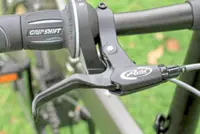For DIY maintenance, place the blade edge-up and then glide the sharpener perpendicularly from hilt to tip three to four times with light pressure.
Anyone who’s battled a crusty loaf with a smooth-edged knife knows the sheer relief of switching to a serrated blade.
Saw gently, and the bread’s airy crumb stays intact; press with a plain knife, and you’ll crush it into sad crumbs.
Tomatoes, too, reveal their stubborn side. Their deceptively thin skin resists blunt blades, but a serrated edge glides through, yielding paper-thin slices perfect for salads or sandwiches.
Even high-end steakhouses trust serrated paring knives – those compact tools turn wrestling a ribeye into a graceful carve.
While smooth blades dominate everyday chopping, serrated edges thrive in gritty, high-stakes scenarios.
Mariners and climbers swear by them for slicing through rain-soaked ropes or synthetic cords that defy ordinary knives.
Anglers prepping kembong (Indian mackerel) for bait face a slippery challenge: the fish’s fatty flesh tears easily but a serrated fillet knife minimises mangling, ensuring clean cuts for hooks.
Rescue crews, too, rely on serrated blades to slash seat belts or thick fabrics in seconds during emergencies.
Serrated blades excel in saw-like, back-and-forth motions rather than push cuts.
The secret is in the physics – jagged teeth concentrate pressure on small points, slicing fibrous or tough materials with minimal effort.
The upside is that they stay sharp far longer than plain edges.
The downside? Resharpening is a meticulous task. Standard sharpening stones grind down the delicate serrations, so specialist tools are essential.
For DIY maintenance, opt for a V-shaped tungsten carbide sharpener: place the blade edge-up and then glide the tool perpendicularly from hilt to tip three to four times with light pressure.
Alternatively, use a tapered honing rod, carefully tracing each serration’s curve from edge to spine – never the reverse. Hone only the bevelled side, as most serrated blades are single-edged.
Most outdoor and work knives feature partial serrations – about 5cm of teeth near the hilt – paired with a plain edge.
This design maximises versatility: grip tough materials like rope with the serrated section using a pull motion, then let the smooth blade finish the cut.
It’s ideal for campers processing kindling or fishermen tackling nylon nets.
Not all serrations are equal.
Scalloped serrations, with rounded, evenly spaced teeth, handle all-purpose tasks – think bread, tomatoes or garden twine.
Sawtooth serrations, with aggressive, pointed peaks, tackle heavy-duty jobs like thick ropes or rubber hoses.
Some blades combine both, offering adaptability for mixed challenges.
Before investing, consider the type of tasks you perform outdoors to choose the one that suits you most.








